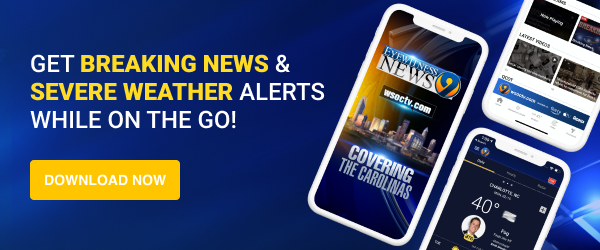CHARLOTTE — Across the world, severe weather events are increasing due to our warming climate and increased moisture in the atmosphere. Fortunately, while these events are proving costlier nearly every year, more people are surviving these disasters than in previous decades.
That’s thanks largely to improvements in forecasting and severe weather warnings ensuring people can get out of harm’s way. However, those warnings only work if they reach the right people and they take action.
In Charlotte’s Emergency Management Office, Director Robert Wike Graham explains the planning process for every severe weather event looks different. Sometimes, there are days to prepare, like when a tropical system is expected to move through the area. Sometimes, his team gets mere hours to respond to a pop-up storm.
“You can help to let people know what’s gonna happen, but you don’t have a crystal ball,” he said.
That uncertainty inherent in all forecasts is a primary reason those who get the message might hesitate or even choose not to take appropriate actions, according to researchers like Susan Joslyn, a professor emeritus of psychology at the University of Washington.
“They’ve had tons of experience with forecasts that don’t pan out, and so they know that, maybe it will, maybe it won’t,” she said. “If there is uncertainty, acknowledging the uncertainty helps. It helps increase trust.”
That acknowledgement can be as simple as a statement like “30 percent chance” or another numeric point of reference.
“It helps people to make better decisions, because if you don’t tell them what the likelihood is, they’re trying to estimate it themselves,” she said.
Joslyn said it also hedges against false alarms. If people have information that tells them there’s a chance a forecast won’t pan out and then it doesn’t, the numeric statement helps explain why without the recipient holding it against the forecaster.
“It makes the forecast seem more honest, like the forecaster is also acknowledging that uncertainty, so people trust it more,” she said.
In our modern world, we’re inundated with messages and alerts from dozens of different public and private services. Graham said his department tries to cut through the noise by being strategic about when and how they release alerts.
The department has multiple ways of sending out a mass message. For the least urgent communications, they can post on their social media sites or send out releases, then there’s the opt-in Char-Meck alerts system. This allows the department to send out information ahead of major threats to prime those on the lookout to pay close attention to weather systems or other emergencies.
The department is also authorized through the federal government to send out direct alerts to every phone in the county. Graham said they reserve that strategy for imminent threats and can geographically gate the alerts so someone in Pineville doesn’t get woken up by an alert for an emergency in Davidson.
“We want to make sure that it’s precise, it’s accurate and that it’s timely,” he said.
When Helene moved through the area, Graham said emergency management sent out five direct alerts and even sent firefighters door-to-door to help evacuate areas under urgent threat like Riverside Dr.
He said it’s important the county understands and trusts they’ll only go that far when the situation demands it.
“Part of our job is to cut through the noise and get to what are the actual facts and push that information out,” he said.
Joslyn said research shows trust in authority, especially around science, has been declining since 2020, so it’s important that emergency communications focus on ways to reach an increasingly skeptical audience.
Often their communications must be concise, but in those few words, she said it’s important anyone on the receiving end gets accurate, relevant information that clearly explains the potential impact of a severe weather threat. In short, it must answer “What do I need to know now to keep myself safe?”
“Giving the why, along with the advice that we give to people, I think will help with that process,” she said.
VIDEO: Nonprofits from WNC provide relief in Texas floods
©2025 Cox Media Group







